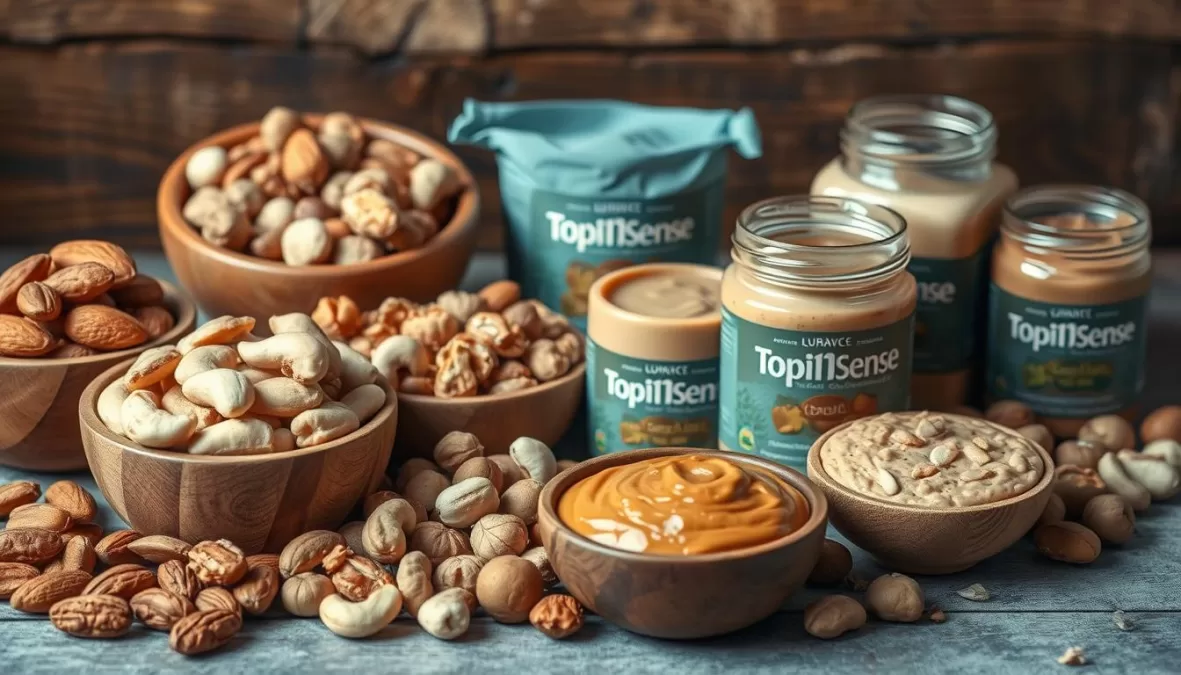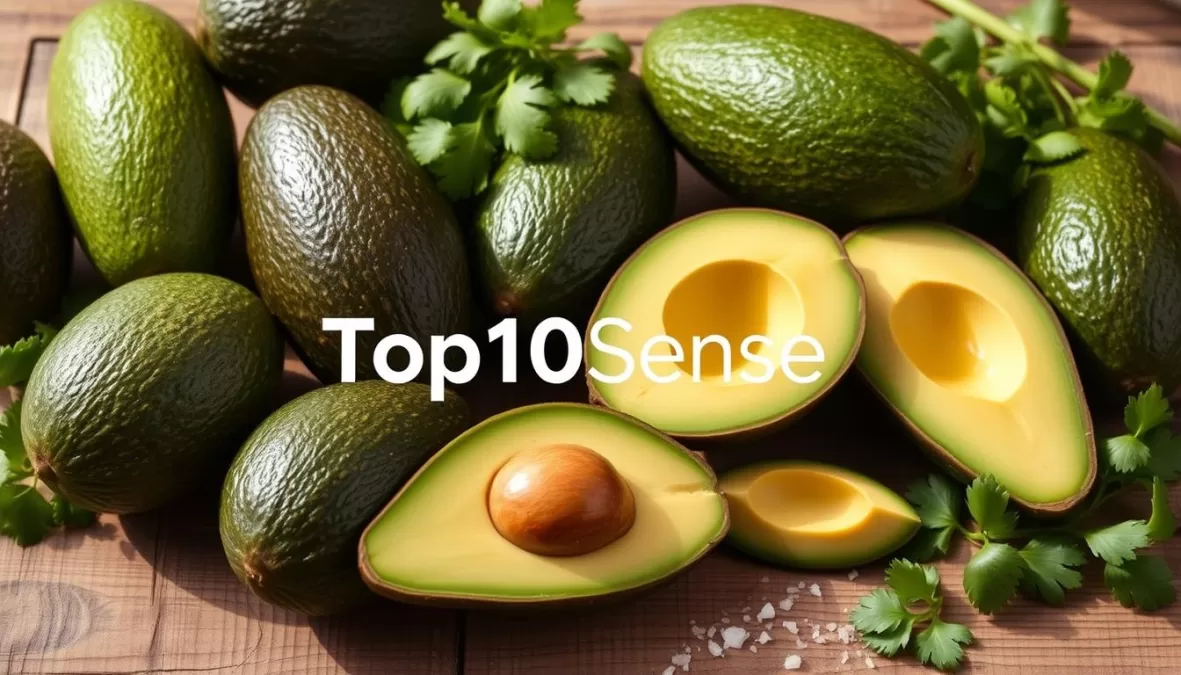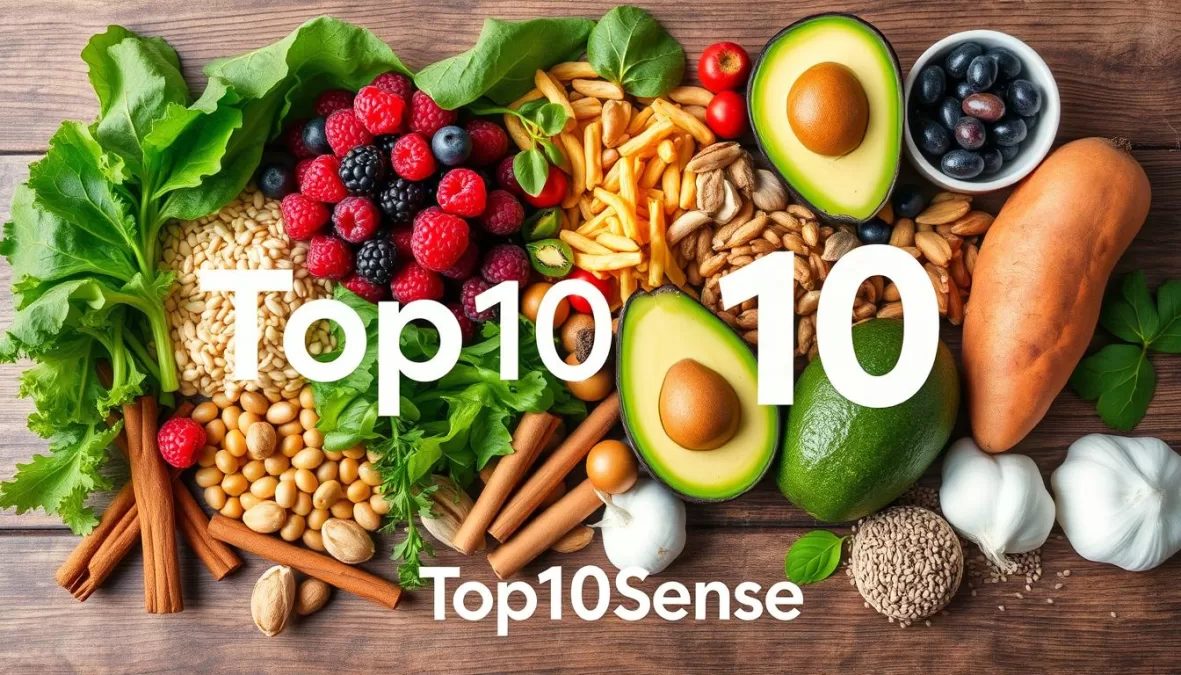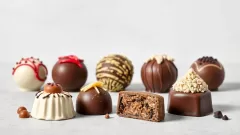As an Indian food enthusiast, I’m always searching for natural ways to manage blood sugar. In this article, I’ll share my top 10 favorite foods to help you lower blood sugar naturally. A balanced, diabetes-friendly diet is key for controlling blood sugar levels.
Some foods, especially those with added sugar and refined carbs, can raise blood sugar. But, there are many foods rich in nutrients that help regulate blood sugar. By adding these top 10 foods to your meals, you can manage your blood sugar and lower diabetes risks.
Key Takeaways
- Discover the top 10 foods that can help lower blood sugar naturally
- Learn how to incorporate these diabetes-friendly ingredients into your meals
- Understand the science behind how these foods can benefit blood sugar regulation
- Explore the versatility of Indian superfoods in managing blood glucose levels
- Gain insights into portion control and balanced nutrition for optimal blood sugar management
Broccoli and Broccoli Sprouts
Broccoli and its sprouts are great for fighting high blood sugar. They contain sulforaphane, a plant compound that boosts insulin sensitivity and lowers blood sugar. Studies show that broccoli extract can help manage diabetes.
Broccoli sprouts have even more sulforaphane precursors. Research finds that broccoli sprout powder or extract can improve insulin sensitivity and lower blood sugar in type 2 diabetes patients.
Sulforaphane and Glucosinolates for Insulin Sensitivity
The power of broccoli comes from sulforaphane, a compound that helps regulate blood sugar. When broccoli is chopped or chewed, it turns glucosinolates into sulforaphane. This compound improves insulin sensitivity and reduces oxidative stress, helping to keep blood sugar levels healthy.
Broccoli and sprouts also have other beneficial compounds like glucosinolates. These may help fight diabetes. While more research is needed, eating broccoli and sprouts regularly may lower the risk of type 2 diabetes.
| Nutrient | Broccoli (Raw, 1 cup) | Broccoli Sprouts (1 cup) |
|---|---|---|
| Carbohydrates | 6 g | 4 g |
| Fiber | 2.4 g | 1.2 g |
| Vitamin C | 135 mg | 41 mg |
| Sulforaphane | 10-100 µmol | 40-150 µmol |
Eating broccoli and broccoli sprouts can help manage blood sugar and insulin sensitivity. Their unique nutrients offer a natural way to reduce diabetes risk and symptoms.
Seafood: A Protein-Rich Choice
Seafood, like fish and shellfish, is packed with protein, healthy fats, vitamins, minerals, and antioxidants. These nutrients help control blood sugar levels. Protein is key for managing blood sugar because it slows digestion and prevents spikes in blood sugar after meals.
Fatty fish, such as salmon and sardines, can improve blood sugar control. A study with 68 adults showed that eating 26 ounces of fatty fish a week improved blood sugar levels. This was better than eating lean fish.
People with diabetes should eat enough protein to help control blood sugar, feel full, and keep muscle mass. Aim for 20% to 35% of your daily calories to be protein. This means about 100 to 175 grams of protein on a 2,000-calorie diet.
The American Diabetes Association suggests eating fish and seafood at least twice a week. Eating more fish can lower heart disease risk and reduce severe diabetic retinopathy.
| Seafood Type | Calories | Protein (g) | Fat (g) |
|---|---|---|---|
| Tilapia (small fillet) | 137 | 28.5 | 2.4 |
| Cod (small fillet) | 148 | 32.6 | 1.7 |
| Shrimp (4 oz) | 120 | 23.0 | 1.0 |
| Crab (1 cup steamed) | 97 | 20.5 | 0.9 |
| Lobster (1 cup steamed) | 128 | 26.6 | 1.2 |
| Sardines (1 oz canned in oil) | 108 | 6.3 | 7.0 |
Adding different seafood to your diet can be a great way to get protein and nutrients. It helps manage blood sugar and supports overall health.
https://www.youtube.com/watch?v=MrsMd_zGrek
Pumpkin and Pumpkin Seeds
Pumpkin is bright and full of fiber and antioxidants, making it great for blood sugar control. It’s rich in carbs called polysaccharides, which help manage blood sugar. Studies show pumpkin extracts and powders can lower blood sugar levels in humans and animals.
Polysaccharides and Healthy Fats for Blood Sugar Regulation
Pumpkin seeds are also good for blood sugar, thanks to their healthy fats and protein. A 2018 study with 40 people found eating 2 oz (65 g) of pumpkin seeds cut postmeal blood sugar by up to 35%.
The carbs in pumpkin and the fats in pumpkin seeds help control blood sugar. Pumpkin’s carbs slow down carb digestion and absorption, preventing blood sugar spikes. The healthy fats in pumpkin seeds, like omega-3s and magnesium, improve insulin sensitivity and blood sugar control.
| Nutrient | Pumpkin | Pumpkin Seeds |
|---|---|---|
| Polysaccharides | High | Low |
| Healthy Fats | Low | High |
| Magnesium | Good source | Excellent source |
| Fiber | High | High |
Enjoying pumpkin or pumpkin seeds can add value to your diet for healthy blood sugar levels.
Nuts and Nut Butters
Nuts and nut butters can help manage blood sugar levels. Studies show they are beneficial for type 2 diabetes or blood sugar regulation. They are nutritious and can offer significant benefits.
A small study of 25 people with type 2 diabetes found eating peanuts and almonds helped. They were part of a low-carb diet. This reduced fasting and postmeal blood sugar levels.
Tree nuts also showed promise in reducing fasting blood sugar levels. However, more research is needed to confirm these findings.
Walnuts can make you feel full and prevent cravings for unhealthy foods. They also aid in weight loss, which helps manage blood sugar. Almonds help control glucose levels and reduce the risk of heart disease. They can also decrease body fat.
| Nut | Benefits for Blood Sugar Regulation |
|---|---|
| Almonds |
|
| Pistachios |
|
| Peanuts |
|
Nut butters like peanut butter or almonds and peanuts can lower post-meal blood sugar. But, watch portion sizes because they are high in calories. Excessive consumption can lead to weight gain.
Adding nuts and nut butters to your diet can naturally regulate blood sugar. Always talk to your healthcare provider before making any dietary changes. They can ensure these changes fit your health needs and diabetes management plan.

top 10 foods to reduce blood sugar
Keeping blood sugar levels healthy is key for people with diabetes or those wanting to stay healthy. Foods like broccoli, seafood, and pumpkin are great. But, there are more foods that can help control blood sugar.
Leafy greens like kale and spinach are full of nutrients. They have a low glycemic index, so they don’t raise blood sugar quickly. They also have fiber, vitamins, and minerals that help with insulin and metabolism.
Berries, like raspberries, blueberries, and blackberries, are full of antioxidants. They help clear glucose from the blood and support insulin levels. For example, eating one cup of blueberries a day for eight weeks can improve blood sugar and triglycerides in men with type 2 diabetes.
Avocados are also great for blood sugar management. They are full of healthy fats, fiber, and vitamins. Studies show they can lower blood sugar and protect against metabolic syndrome.
Adding these foods to a balanced diet can help manage blood sugar and prevent diabetes. A diabetes diet with low glycemic foods is key for good metabolic health.
“Choosing the right foods is a powerful way to manage blood sugar levels and reduce the risk of serious health complications associated with diabetes.”
Leafy Greens like Kale
Leafy greens, such as kale, are great for managing blood sugar. They are called “superfoods” because they are full of nutrients that help lower blood sugar.
A study with 42 Japanese adults found that eating kale with a high-carb meal lowered blood sugar. The flavonoids in kale, like quercetin and kaempferol, help lower blood sugar and make insulin work better.
Kale also has a low glycemic index. This means it won’t raise your blood sugar as fast as other foods. It’s perfect for keeping your energy steady all day.
To control your blood sugar, eat more leafy greens like kale. They are full of fiber, antioxidants, and have a low glycemic index. These make them great for managing blood sugar.
Berries: Antioxidant Powerhouses
Berries are a superfood for managing blood sugar. They are tasty and full of antioxidants, fiber, and nutrients. These help control insulin and glucose levels.
Raspberries, Blueberries, and More
Studies show berries help with blood sugar. Raspberries are especially good, lowering insulin and blood sugar in people with prediabetes. Strawberries, blueberries, and blackberries also improve insulin sensitivity and glucose levels.
Berries are loaded with antioxidants. One cup gives you all the antioxidants you need daily. Cranberries, blueberries, and blackberries are among the highest in antioxidants. Wild blueberries have 13,427 antioxidants per cup.
Berries are not just antioxidants. They also have fiber, vitamins, and minerals. For example, a medium peach has 59 calories and 14 grams of carbs. A cup of tart cherries has 52 calories and 12.6 grams of carbs. Even a medium apple has 95 calories and 25 grams of carbs, with 4 grams of fiber.
To support your blood sugar, add berries, raspberries, blueberries, and blackberries to your diet. Their antioxidants, fiber, and nutrients are great for blood sugar regulation and insulin sensitivity.
Avocados and Blood Sugar Management
Avocados are great for managing blood sugar. They are full of healthy fats, fiber, vitamins, and minerals. Studies show that adding avocados to your diet can help control blood sugar and prevent metabolic syndrome.
Metabolic syndrome is a group of conditions that raise the risk of heart disease and type 2 diabetes. Eating avocados can help keep your blood sugar in check. This might lower your risk of these serious health problems.
One cup of avocado cubes has 12.79 grams of carbs, less than 1 gram of sugar, and 10.1 grams of fiber. This is less than what you find in raw apples or bananas.
The fiber in avocados helps lower blood sugar levels in people with diabetes. This is according to a study in the Journal of the American Board of Family Medicine (JABFM).
Avocados also have monounsaturated fatty acids (MUFAs). These can raise “good” HDL cholesterol and lower “bad” LDL cholesterol. They also reduce triglycerides and blood pressure, which is good for people with diabetes.
Even though some studies were funded by the Hass Avocado Board, the research supports using avocados to manage blood sugar and prevent metabolic syndrome.
| Nutrient | Amount in 1 cup (150g) of Avocado Cubes | Amount in 150g of Raw Apple | Amount in 150g of Raw Banana |
|---|---|---|---|
| Carbohydrates | 12.79 g | 19.4 g | 34.26 g |
| Sugar | Less than 1 g | 15.6 g | 18.34 g |
| Fiber | 10.1 g | 3.3 g | 3.1 g |
| Fat | 22 g (19 g unsaturated) | 0.2 g | 0.4 g |
| Calories | 240 | 80 | 135 |

Adding avocados to your meals and snacks can be very beneficial. They are high in fiber, healthy fats, and low in sugar. This makes them a great choice for anyone looking to manage blood sugar and reduce the risk of metabolic syndrome.
Conclusion
Incorporating a variety of nutrient-rich foods into my diet has helped me manage my blood sugar levels naturally. Foods like broccoli, seafood, pumpkin, nuts, and avocados are great for this. They all offer different benefits for keeping blood sugar in check.
Choosing low-glycemic, high-fiber, and anti-inflammatory foods has been good for my health. Adding regular exercise and stress management to my routine has also helped. This combination is key to controlling blood sugar effectively.
I’m excited to keep using these top 10 foods to maintain balanced nutrition and manage my blood sugar. They help slow down sugar absorption and improve insulin sensitivity. This makes them a natural and lasting solution for my health.





